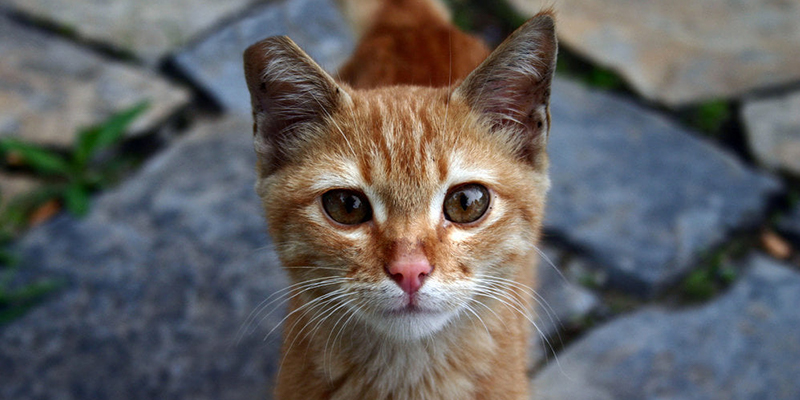We see a lot of misconceptions about community cats on social media and on neighborhood message boards. So, we’re sharing the myths and the truths regarding community cats, as well as our recommendation for humanely managing them. Read on to learn more!
If you have found a stray cat or kittens, don’t grab them until you read our tips on what to do when you find lost pets.
MYTH: Community cats are depleting the bird population.
TRUTH:
Community cats eat mostly insects, rodents and scavenged food. They’re not as successful at hunting birds. Studies that suggest community cats are depleting the bird population leave the reader with the false impression that cats harm many more birds rather than the actual number. Alley Cat Allies has an analysis of the inaccurate science used in most of the cat predation research out today.
Invasive rodents are significant predators of nest eggs. And because cats prey on rats, removing the cats would actually increase bird nestling predation.
Cat Wildlife Management
MYTH: Trapping and removing community cats will solve the problem.
TRUTH:
New cats will move into the area and breed up to capacity. This well-documented phenomenon is called the “vacuum effect.” Litter-bearing mammals ALWAYS rebound quickly to the carrying capacity of the environment.
MYTH: If people stop feeding community cats, they will go away.
TRUTH:
Cats are very attached to their territory and will stay put, live on meager food supplies and continue to reproduce.
MYTH: Feeding cats helps them, even if they aren't spayed and neutered.
TRUTH:
Feeding cats without spaying or neutering greatly contributes to the problem of cat overpopulation. Cats can get pregnant at four months old and deliver three litters every year which exponentially increases the number of cats born. Kittens have a very high mortality rate due to predators and illness, both of which can be prevented through spaying/neutering.

MYTH: Community cats are a health risk to humans and other cats.
TRUTH:
Studies at Stanford University and University of Florida found that community cats pose very little risk to human health or safety and no risk to other cats. Although cats are not natural carriers for rabies, community cats are vaccinated against rabies as part of Trap-Neuter-Return (TNR). Also, the British Medical Journal states that cats are not a risk factor for toxoplasmosis transmission to humans; eating undercooked meat is the primary risk factor. Although ingesting cat feces could lead to toxoplasmosis, we can know that is not a common occurrence.
MYTH: Friendly community cats should be put up for adoption instead of being released back to their neighborhood after spay/neuter.
TRUTH:
The cat is likely someone’s pet who is just out for a stroll. Or, they may have several caretakers and split their time between the caretakers’ homes or yards, etc.
We do not want to take away someone’s cat, only to put the cat on a track that is set up for failure. An unhappy indoor cat will likely spray, claw furniture, not get along with other indoor pets, cry to go outside, etc. They can be much happier living outdoors. Also, people may not be aware of the stress that the cats go through when removed from their environment. Just as people love their pets, outdoor cats love their families and do not want to be taken away from their families or their cats friends in the neighborhood. It can be traumatic from the cat’s point of view, and only 2.5% of cats taken to a shelter are ever reunited with their families.
MYTH: Community cats are dangerous
TRUTH:
Community cats are often wary of people, will not approach people they do not know and will not attack anyone unless they are cornered. Parents and caregivers should teach children not to approach or touch any unknown animal. To learn more about the results of research relating to community cats and public health, please visit The National Feline Research Council.
In the end, both TNR proponents and wildlife supporters have the same goal: to reduce the number of free-roaming cats. LifeLine Animal Project believes that the best way to achieve this goal humanely is through TNR (Trap-Neuter-Return), where cats are trapped, neutered, vaccinated, ear-tipped and released back to their neighborhood.





